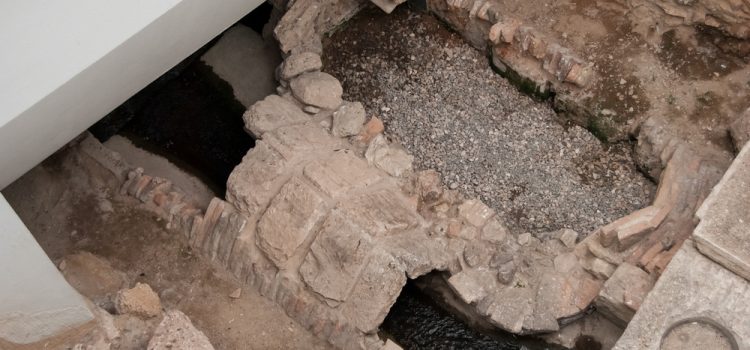 e-tour
Create your tour
e-tour
Create your tour
- +Attica
- +Byzantine period
- +Ottoman period
- +Modern History
- +Culture
- +Activities


Heridanos River
Heridanos is the little river under Monastiraki Square, as covered by the Romans.
Modern and Contemporary era (1821 - )
1960 Discovered.
2003 Completion of elevation works at the metro.
Ottoman era (1453- 1821)
Byzantine era (331 AC- 1453)
Roman era (30 BC- 330 AC)
Hellenistic era (322- 31 BC)
Classical era (478-323 BC)
Archaic era (800-479 BC)
Geometric era (-1100- 800 BC)
Prehistory (-1100 BC)
Home > Athens > Architecture > Centre > Ancient architecture > Hellenistic and Roman period > Heridanos River
What I can see
The excavated antiquities in Monastiraki metro station show a part of the Heridanos river, which was the main area in which private activity in antiquity developed. Two paths to the north and south show where homes and other private places, such as workshops and warehouses, began. The river was later covered over by orders of the Roman Emperor Hadrian and thus turned into a sewer. The retaining wall reveals the existence of a portico or a road.
What I can't see
Heridanos is a tributary of Ilissos river towards the west and stems from Lycabettus Hill. Herodotus, Plato and Pausanias mention it in their works. According to another scientific view, this stream may not be the Heridanos but the Kaissariani’s creek, which stems from the mountain of Hymettus. However, nothing is certain yet. According to ancient sources, the river was polluted, which was a problem in antiquity. A little further down, in Kerameikos, the Athenians used the banks of Heridanus as a cemetery, long before the construction of the gates and walls.
Bibliography
Kontarou- Rassia N., (2013), Ο Ηριδανός τρέχει στην Καισαριανή, [Eridanus flows in Kessariani], Enet.gr
http://www.enet.gr/?i=news.el.article&id=356436
Lastvisit 18/8/2015



